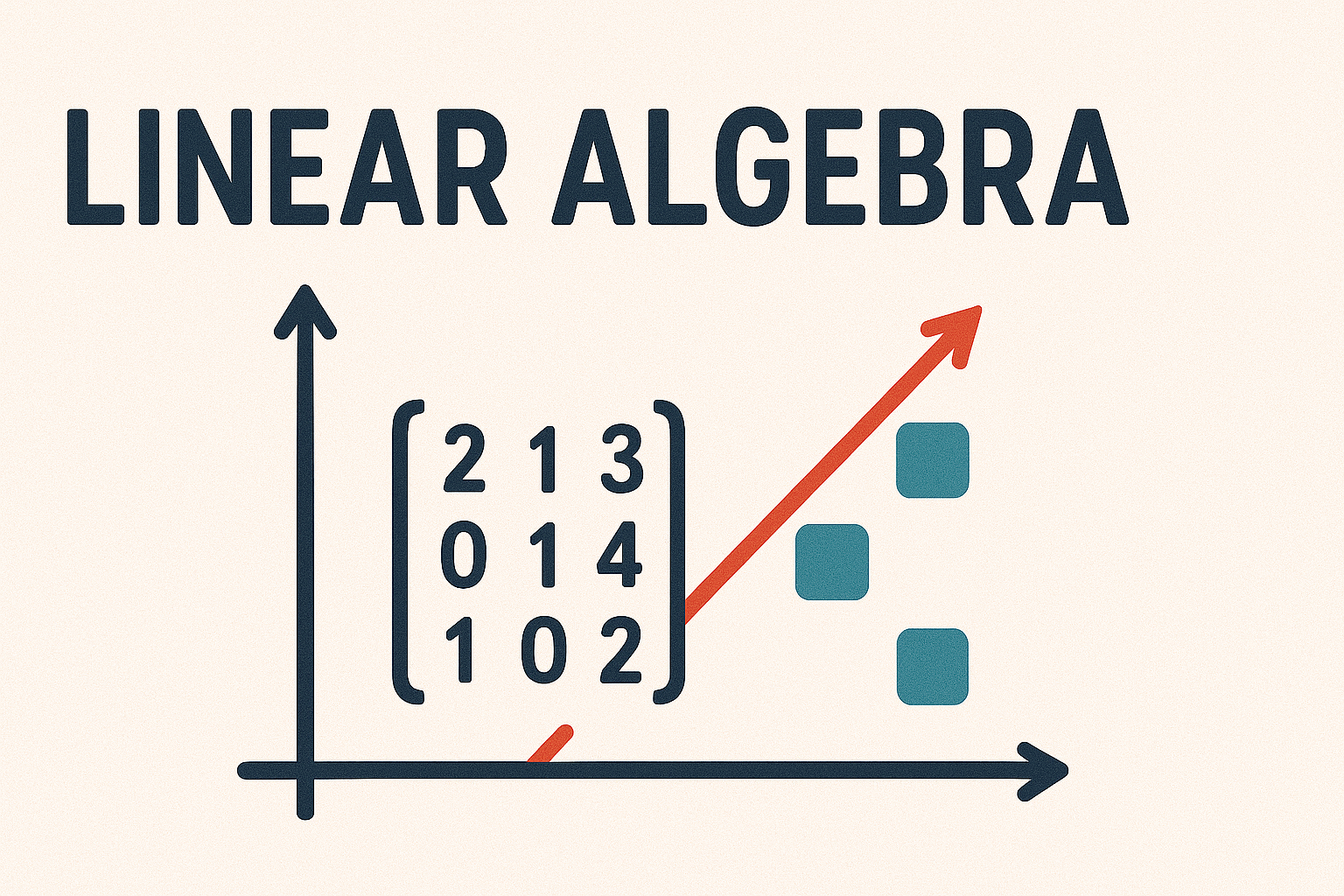2.3. Solving systems of linear equations using the inverse matrix#
Given the system of linear equations \(A \mathbf{x} = \mathbf{b}\) then we can use matrix algebra to solve for the variable vector \(\mathbf{x}\)
So we can use the inverse of the coefficient matrix \(A\) to solve for \(\mathbf{x}\).
Theorem 2.1 (Solution of a linear system of equations using the inverse matrix)
The solution to a system of linear equations \(A\mathbf{x} = \mathbf{b}\) can be calculated using \(\mathbf{x} = A^{-1}\mathbf{b}\).
Consider the system of linear equations from the previous section
The coefficient matrix and constant vector are
and the inverse of this coefficient matrix can be easily calculated using the adjoint-determinant formula to give
Using \(\mathbf{x} = A^{-1}\mathbf{b}\) the solution is
so \(x_1 = 1\) and \(x_2 = 2\) (which we saw when we used algebra to solve this system). We can check whether this is the correct solution by substituting \(\mathbf{x}\) into \(A\mathbf{x} = \mathbf{b}\)
Example 2.1
Solve the following systems of linear equations using the inverse of the coefficient matrix:
(i) \(\begin{array}{rl} x_1 - 2x_2 \!\!\!\! &= 11, \\ 2x_1 + 4x_2 \!\!\!\! &= -18. \end{array}\); (ii) \(\begin{array}{rl} x_1 - 2x_2 + 3x_3 \!\!\!\! &= -7, \\ 2x_2 - 4x_3 \!\!\!\! &= 8, \\ 3x_1 + x_2 - 4x_3 \!\!\!\! &= 7. \end{array}\)
Solution
(i) Here \(A = \begin{pmatrix} 1 & -2 \\ 2 & 4 \end{pmatrix}\) and \(\mathbf{b} = \begin{pmatrix} 11 \\ -18 \end{pmatrix}\). Calculating \(A^{-1}\)
So the solution is
Checking the solution
(ii) Here \(A = \begin{pmatrix} 1 & -2 & 3 \\ 0 & 2 & -4 \\ 3 & 1 & -4 \end{pmatrix}\) and \(\mathbf{b} = \begin{pmatrix}-7 \\ 8 \\ 7 \end{pmatrix}\). Calculating \(A^{-1}\)
So the solution is
Checking the solution
